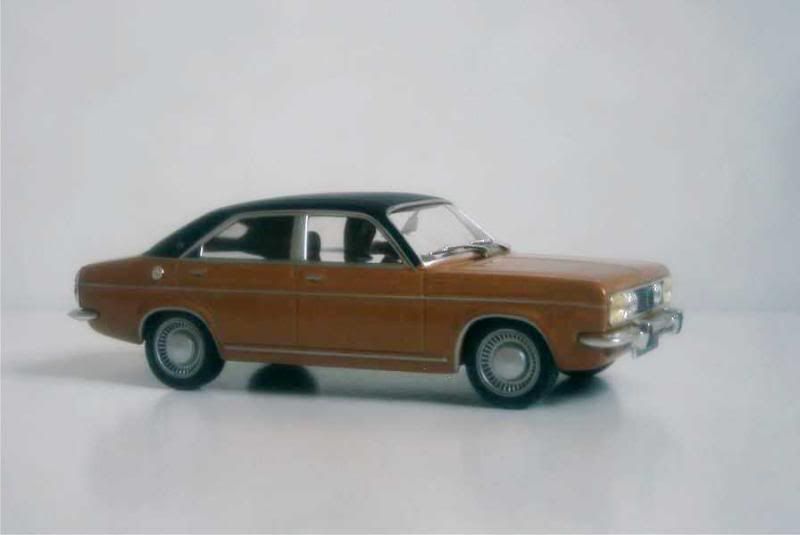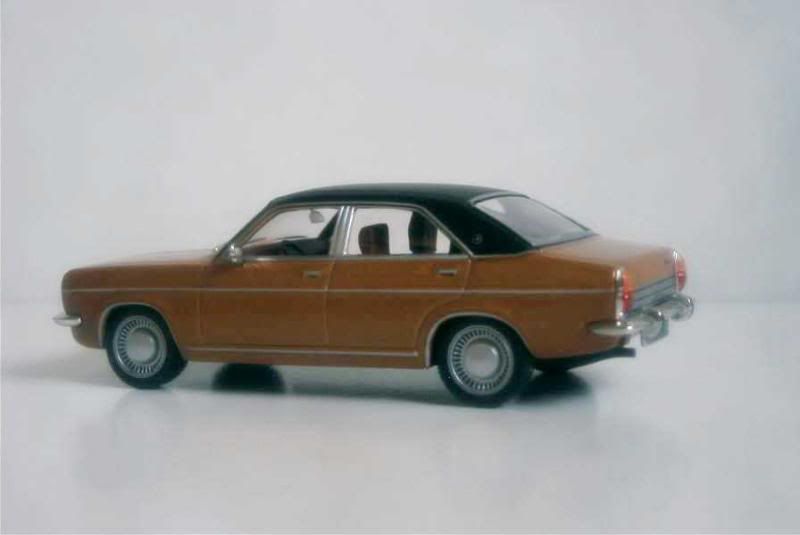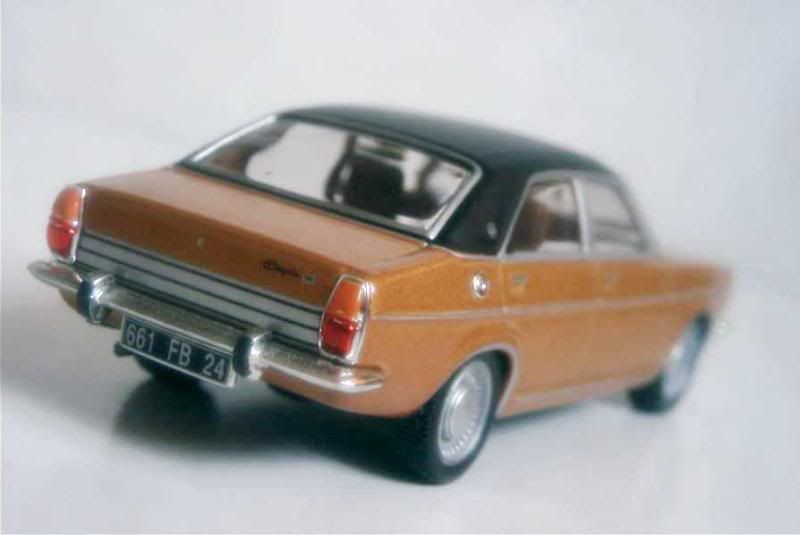A little history
By the late Sixties both Rootes in Great Britain and Simca in France were designing new top-of-the-range models. By 1970 both were also part of the Chrysler group, with the immediate effect that only one of their respective projects would proceed to the production stage. This gave the opportunity for their new American owners to discontent both the French and the British. The beautiful mock-ups that Bertone had made for Simca were scrapped, to be replaced by a Roy Axe design which seriously lacked personality. On the other hand, the V6 engine that had been studied in England and had gone as far as being heavily tested was also shelved, only modest four-bangers being retained for production. Furthermore, though the initial plan was to produce the car on both sides of the Channel, the British were virtually robbed of the car, which was ultimately built in Simca’s Poissy plant.
Typically the 160 and 180 models (their names reflecting the 1.6- and 1.8-litre capacities of their engines) were introduced at the Paris motor show in October 1970 – on the British market, the car would just be another import. Initial reactions from journalists were almost unanimous: too soft suspension and tricky handling, inglorious engines though precise steering. For the 1973 model year, Chrysler tried to add some prestige to the range with a “2 litres” variant, only forgetting when making vinyl roof and automatic transmission standard that the Europeans’ motoring taste somewhat differed from the Americans’. Adding such oddities to the car didn’t help, and the already poor sales continued to sink.
When the C-Car had been introduced in 1970, it was supposed to open a long and prosperous era of cooperation between European and American partners. In the end, it was the only locally-made vehicle ever to bear the Chrysler name in the Old World. By mid-1978, Chrysler was nearing a complete financial collapse. So you thought the present situation was never seen before? Well, back in the Seventies, Chrysler still had large assets around the world to get rid off in order to keep itself buoyant – nothing like this right now. Actually, the whole of its European operations didn’t bring so much cash: just one dollar, to be exact... That’s the purely symbolic price Peugeot accepted to pay to take over all of Chrysler factories in France, Great Britain and Spain – which came with huge debts to fill.
Never really developed by Chrysler, the C-Cars wouldn’t be more by Peugeot, which had its own 504s and 604s battling on the very same market, not mentioning the CX built by Citroën, a brand it had also taken over four years earlier. In 1979, the 160 became the 1609, while the 180 was renamed 1610, with little changes other than designations. A few more were built until early 1981, when the car retired at the term of a long but unhappy career. A modern and promising car, the Talbot Tagora, stepped in – deemed to a much shorter but equally miserable life than that of its predecessor…
About the model
Model: Chrysler 180
Year: 1974
Maker: Ixo
Scale: 1/43
Distributed by: Altaya as no.51 of its Nos Chères Voitures d'Antan press series
Acquired: brand new, in May 2006, in Souillac, France
During the Seventies, the 180 certainly was a much bigger success for Majorette in 1/60 scale than it was for Chrysler in full scale. I had many of the former, which brought me to like the latter at an early age. It’s therefore a pleasure to own one today in 1/43. Though it’s far from being Ixo’s most beautiful rendition, it positively above par when compared to other offers by the Chinese company. I’d give a 13/20 to it. Please note that Altaya since then released the “2 litres” version in its Simca collection.




By the late Sixties both Rootes in Great Britain and Simca in France were designing new top-of-the-range models. By 1970 both were also part of the Chrysler group, with the immediate effect that only one of their respective projects would proceed to the production stage. This gave the opportunity for their new American owners to discontent both the French and the British. The beautiful mock-ups that Bertone had made for Simca were scrapped, to be replaced by a Roy Axe design which seriously lacked personality. On the other hand, the V6 engine that had been studied in England and had gone as far as being heavily tested was also shelved, only modest four-bangers being retained for production. Furthermore, though the initial plan was to produce the car on both sides of the Channel, the British were virtually robbed of the car, which was ultimately built in Simca’s Poissy plant.
Typically the 160 and 180 models (their names reflecting the 1.6- and 1.8-litre capacities of their engines) were introduced at the Paris motor show in October 1970 – on the British market, the car would just be another import. Initial reactions from journalists were almost unanimous: too soft suspension and tricky handling, inglorious engines though precise steering. For the 1973 model year, Chrysler tried to add some prestige to the range with a “2 litres” variant, only forgetting when making vinyl roof and automatic transmission standard that the Europeans’ motoring taste somewhat differed from the Americans’. Adding such oddities to the car didn’t help, and the already poor sales continued to sink.
When the C-Car had been introduced in 1970, it was supposed to open a long and prosperous era of cooperation between European and American partners. In the end, it was the only locally-made vehicle ever to bear the Chrysler name in the Old World. By mid-1978, Chrysler was nearing a complete financial collapse. So you thought the present situation was never seen before? Well, back in the Seventies, Chrysler still had large assets around the world to get rid off in order to keep itself buoyant – nothing like this right now. Actually, the whole of its European operations didn’t bring so much cash: just one dollar, to be exact... That’s the purely symbolic price Peugeot accepted to pay to take over all of Chrysler factories in France, Great Britain and Spain – which came with huge debts to fill.
Never really developed by Chrysler, the C-Cars wouldn’t be more by Peugeot, which had its own 504s and 604s battling on the very same market, not mentioning the CX built by Citroën, a brand it had also taken over four years earlier. In 1979, the 160 became the 1609, while the 180 was renamed 1610, with little changes other than designations. A few more were built until early 1981, when the car retired at the term of a long but unhappy career. A modern and promising car, the Talbot Tagora, stepped in – deemed to a much shorter but equally miserable life than that of its predecessor…
About the model
Model: Chrysler 180
Year: 1974
Maker: Ixo
Scale: 1/43
Distributed by: Altaya as no.51 of its Nos Chères Voitures d'Antan press series
Acquired: brand new, in May 2006, in Souillac, France
During the Seventies, the 180 certainly was a much bigger success for Majorette in 1/60 scale than it was for Chrysler in full scale. I had many of the former, which brought me to like the latter at an early age. It’s therefore a pleasure to own one today in 1/43. Though it’s far from being Ixo’s most beautiful rendition, it positively above par when compared to other offers by the Chinese company. I’d give a 13/20 to it. Please note that Altaya since then released the “2 litres” version in its Simca collection.







No comments:
Post a Comment